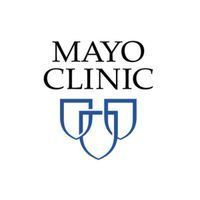
Maintenance IV Immunoglobulin Decreases Relapse Rate in Adults With MOGAD

Only 17% of patients who received 1 g/kg of intravenous immunoglobulin every 4 weeks or more experienced disease relapse compared with 50% of those treated with lower or less frequent dosing.
Mostly studied in pediatric settings, new research of adults with myelin oligodendrocyte glycoprotein antibody-associated disease (MOGAD) showed that treatment with maintenance intravenous immunoglobulin (IVIG) was associated with a reduction in disease relapse. The higher rate of disease relapse in patients who received lower or less frequent IVIG dosing suggested a dose response with fewer relapses at higher doses.1
While receiving IVIG treatment, the observed median annualized relapse rate improved to 0 (range, 0-3) from median rates of 1.4 (range, 0-6.1) prior to receiving the therapy (t108 = 7.14; P <.001). Led by John J. Chen, MD, PhD, neuro-ophthalmologist,
"Although some of the decrease in relapses observed in patients who received IVIG could be attributed to regression to the mean, most patients had numerous relapses and failed multiple medications before starting IVIG therapy, which has previously been shown to be associated with a higher risk of relapse on subsequent treatment with other therapies," Chen et al wrote.
The retrospective cohort study, conducted from January 2010 to October 2021, identified 876 adult patients with MOGAD, 59 of whom met inclusion criteria and were treated with maintenance IVIG. Patients had a history of 1 or more central nervous system demyelinating attacks consistent with MOGAD, had MOG-IgG seropositivity tested by cell-based assay, and were at least 18 years old before receiving therapy to be included in the study.
READ MORE:
Maintenance IVIG was initiated as firstline immunotherapy in 15 patients (25%), and as secondline immunotherapy in 37 patients (63%) owing to failure of prior immunotherapy and in 7 patients (12%) owing to intolerance to prior therapy. Among those who failed prior immunotherapy, patients failed a median of 2 prior treatments (range, 1-4) before starting IVIG, with 9 patients (23%) having failed 3 or more prior treatments.
As for treatment regimen, maintenance IVIG was initiated at a frequency of every week to every 4 weeks with a dose ranging from 0.4 g/kg to 2 g/kg. At final follow-up, 52 patients (88%) were still receiving the therapy with a median treatment duration of 1.7 years (range, 0.5-9.9). In total, 34% (20 of 59) of the cohort had at least 1 relapse while on maintenance IVIG, corresponding to a median number of attacks of 0 (range, 0-7). Relapses occurred at a median of 1 year (range, 0.03-4.8) after initiation of IVIG.
The dosage seemed to have an effect on relapses, as 17% (5 of 29) of those treated at a dose of 1 g/kg of IVIG every 4 weeks or more had a relapse with a mean ARR of 0.12 (SD, 0.34), whereas 50% (15 of 30) treated with lower or less frequent IVIG dosing had a relapse with a mean ARR of 0.45 (SD, 0.73; t57 = –2.24; P = .03). Notably, none of the 11 patients treated with 0.4 g/kg every week or 2 g/kg or IVIG every 4 weeks relapsed; however, 3 of 8 patients (38%) relapsed at a dose of approximately 2 g/kg every 6 weeks. The investigators concluded that the overall risk of relapse was increased among those treated with lower doses or less frequently (HR, 3.31; 95% CI, 1.19-9.09; P = .02).
"Lengthening the interval between IVIG dosing could potentially create unstable peaks and troughs and may results in ‘end of dose wear off’ as seen in other diseases, such as chronic inflammatory demyelinating polyneuropathy," Chen et al wrote.
There were no observed differences in relapse rates among those who used IVIG as firstline therapy (6 of 15; 40%) compared with those in which IVIG was not used as first-line therapy (14 of 44; 32%; HR, 1.35; 95% CI, 0.52-3.53; P = .56). Additionally, between those who did and didn’t relapse, there were no difference in age, pre-IVIG ARR, or Expanded Disability Status Scale (EDSS) score.
At the end of the follow-up, a total of 7 patients (12%) discontinued IVIG. Of them, 4 (57%) discontinued for efficacy, 2 (29%) for adverse events (infusion reaction and fatigue/weight gain), and 1 (14%) for a trial not receiving therapy after a period of disease inactivity. Among the 52 patients who were still on study drug at last follow-up, 5 (10%) were taking a dose that was less than 0.4 g/kg every 4 weeks, 18 (35%) were taking 0.4 g/kg every 4 weeks, 17 (33%) were taking 1 g/kg every 4 weeks or equivalent, and 12 (23%) were taking 2 g/kg every 4 weeks or equivalent.
REFERENCE
1. Chen JJ, Huda S, Hacohen Y, et al. Association of maintenance intravenous immunoglobulin with prevention of relapse in adult myelin oligodendrocyte glycoprotein antibody-associated disease. JAMA Neurol. Published online April 4, 2022. doi:10.1001/jamaneurol.2022.0489
Newsletter
Keep your finger on the pulse of neurology—subscribe to NeurologyLive for expert interviews, new data, and breakthrough treatment updates.































